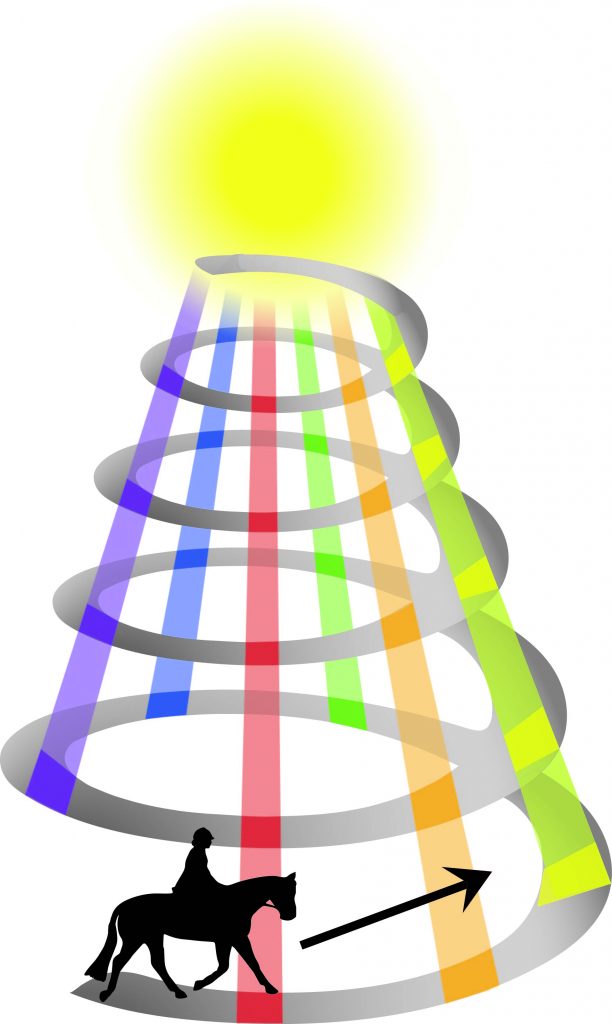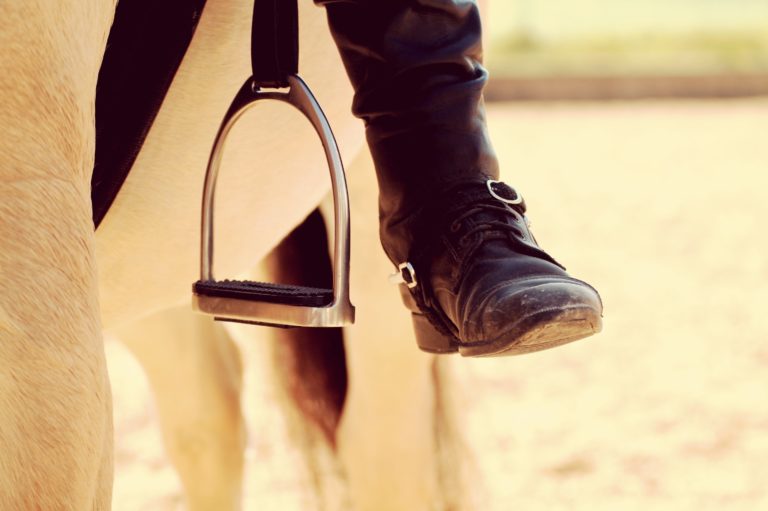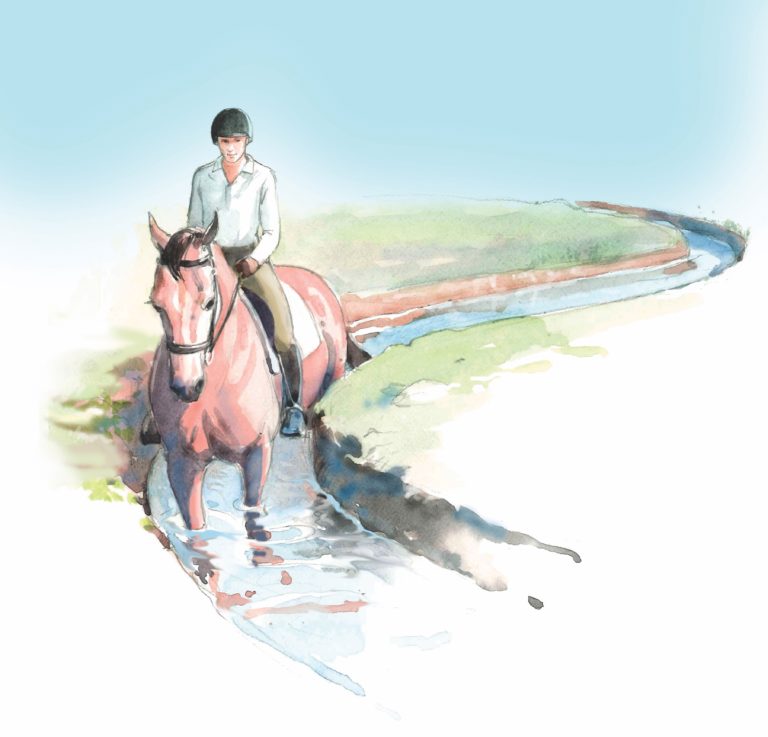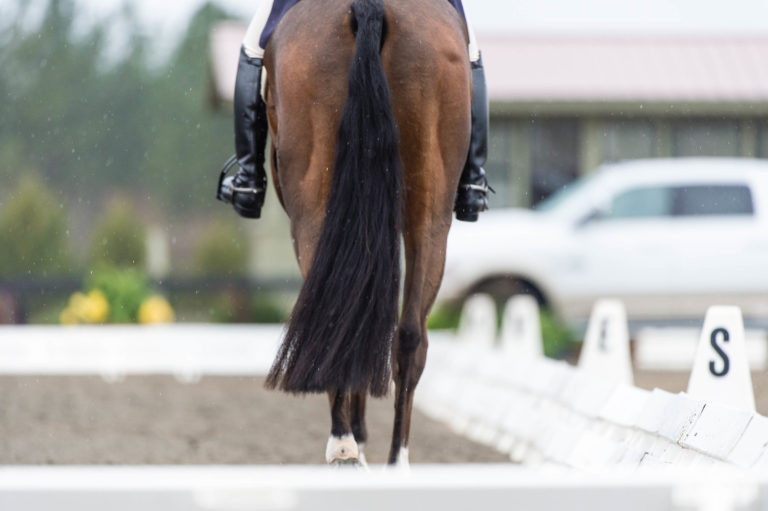The inspiration for this article comes from Mr. Charles de Kunffy. Throughout his writings, he repeatedly emphasizes the importance of longitudinal flexion (LF) and the positive effect it has on the health and longevity of any riding horse. I am an engineer by training, with a minor in physics. As a result, I have a need to understand how things work mechanically. This analysis of longitudinal flexion is intended to provide a visual/conceptual understanding of the topic. It is not a “how-to” article. Instead, it is an exploration of one of the major goals of classical riding and why it is, indeed, such a worthy goal.
First, let me briefly clarify what longitudinal flexion means for this article. Longitudinal refers to the topline of the horse, and flexion refers to the stretching, and elevation of the horse’s spine. Many people use the term longitudinal flexion to mean a softening of the poll, so that the front profile of the horse’s head is vertical with the ground. For our purposes, LF will deal with both flexion at the poll, as well as flexion or rounding of the rest of the horse’s spine.

Physically, horses are built like a bridge. They have four supporting pillars, or legs, and a long connecting span, or back. If you think of a typical suspension bridge, it has four major pillars that support an upwardly arched section of road. There are many reasons to design a suspension bridge in this manner. One of the most important is that the upward arch of the bridge allows for a certain amount of shock absorption. Most of us don’t think of bridges as being mobile, but they are. Factors like wind, falling rain and driving cars exert huge forces on the bridge structure. An upward arch allows for a certain amount of vertical motion. The bridge arch can literally swing up and down to accommodate the changing forces that it experiences. The physical shape of the arch and its ability to act as a shock absorber greatly increase the bridge’s physical longevity.
Imagine for a moment that we were to design an upside down suspension bridge. The bridge arch, which has been flexed downward, has little ability to move vertically. The weight of the cars and pull of gravity cause the bridge span to rest at its point of maximum downward arch. This bridge has little shock-absorbing ability. Any forces it experiences will be harshly transmitted through the bridge supports and structure. In short, a bridge designed in this manner will experience a much shorter usable lifespan due to metal fatigue and other degenerative forces.
The same principle applies to our equine friends who are built like bridges. Horses can carry themselves in two basic ways: with an upwardly flexed topline like our well-designed bridge (Figure 1), or with a downwardly flexed topline, like our poorly designed bridge (Figure 2).
The upwardly flexed horse has a back that swings up and down and acts like a shock-absorption system. This allows him to bear the extra weight of the rider in a manner that is much less taxing to his physical structure.
In physics, the spring is a subject that is studied extensively. A round topline can be envisioned as having a spring that sits between the maximum and minimum positions of arch in the horse’s back. Springs store and release energy as they compress and expand. Herein lies the fundamental benefit of longitudinal flexion. As the horse moves, the rider’s weight causes a downward force on the horse’s back. A flexed back that swings operates like a spring. It absorbs and releases the forces that the rider’s weight exerts on the horse’s back. A gentle cyclical process has been created that allows the horse to carry the burden of a rider in a way that won’t damage him physically.
A horse that is hollow in the back has no ability to absorb the downward forces created by the rider’s weight. Instead, this weight becomes transmitted through the horse’s skeletal structure in a harsh, damaging manner. In physics we call this impulse.
Strong impulse is created when a moving object is stopped abruptly in a short period of time, just like a rider’s seat that is impacting the hollow back of a horse. This is in sharp contrast to a rider sitting on the swinging back of a flexed horse. The spring-like action of the horse’s back mitigates the downward force of the rider’s seat. Instead of experiencing a series of concussive shocks, the rider experiences a comfortable, soft and controllable ride. Newton’s third law says that for every action, there is an equal and opposite reaction. When gravity pulls a rider’s seat down onto the horse’s back, it pushes back up with an equal an opposing force. As a result, our flexed horse experiences a rider that impacts his back in a soft and comfortable way. LF creates a positive synergy between horse and rider.
A closer look at our good bridge design also reveals the importance of allowing our horses to be ridden forward and in a long frame. Letting a horse stretch down, while simultaneously keeping him balanced and moving forward, will allow his back to flex upward. A horse can be both longitudinally flexed and in a long frame.
I feel I should note that our horse, unlike a stationary bridge, has supports that are moveable. I mention this because the creation of LF is dependent on the rider’s ability to control the horse’s haunches. A nontrivial topic that takes many of us years to master.
This leads us to the last and likely most important point. It has to do with head position. It is still commonly believed that a horse ridden with a high headset is also round across the topline. This is not necessarily so. It is quite possible and all too common to see horses pulled into a high headset while still being hollow in the back. This is physically damaging for the horse. Without a flexed back, he cannot dissipate the forces created by bearing a rider’s weight. In order for him to remain flexed across the topline during collection, he must lower or tilt his pelvis and take more weight on his hindquarters. This allows his forehand to rise slightly and his center of mass to shift toward his haunches. The raising and arching of his head and neck occurs not because of rein action but because it helps to shift his center mass toward his haunches (Figure 3). A horse who 1) has his head held high by confining reins, 2) is hollow in the back and 3) has his haunches camped out in the next town, is not longitudinally flexed! A horse ridden like this for any length of time is a horse with a bleak future.

In all, LF creates a spring-like action/motion in the horse’s back. This motion mitigates the force of the rider’s weight and prolongs the useful life of a riding horse. Mr. de Kunffy is right. Good dressage riding is therapeutic for the horse. The laws of physics never lie, even when the subject is the horse. Good riding that results in a longitudinally flexed horse is physically beneficial. Good riding also creates a happy, willing partner. In the end, the latter may be the greater of the two benefits.
This article first appeared in the September 2010 issue of Dressage Today magazine.
Anne Crowell was introduced to dressage by a student of Charles de Kunffy. She has a degree in engineering from California State University and is a graduate student in applied physics at George Mason University. She works for Stubben NA as a fitter in their custom saddlery program and lives in Northern Virginia with her husband and three daughters.











